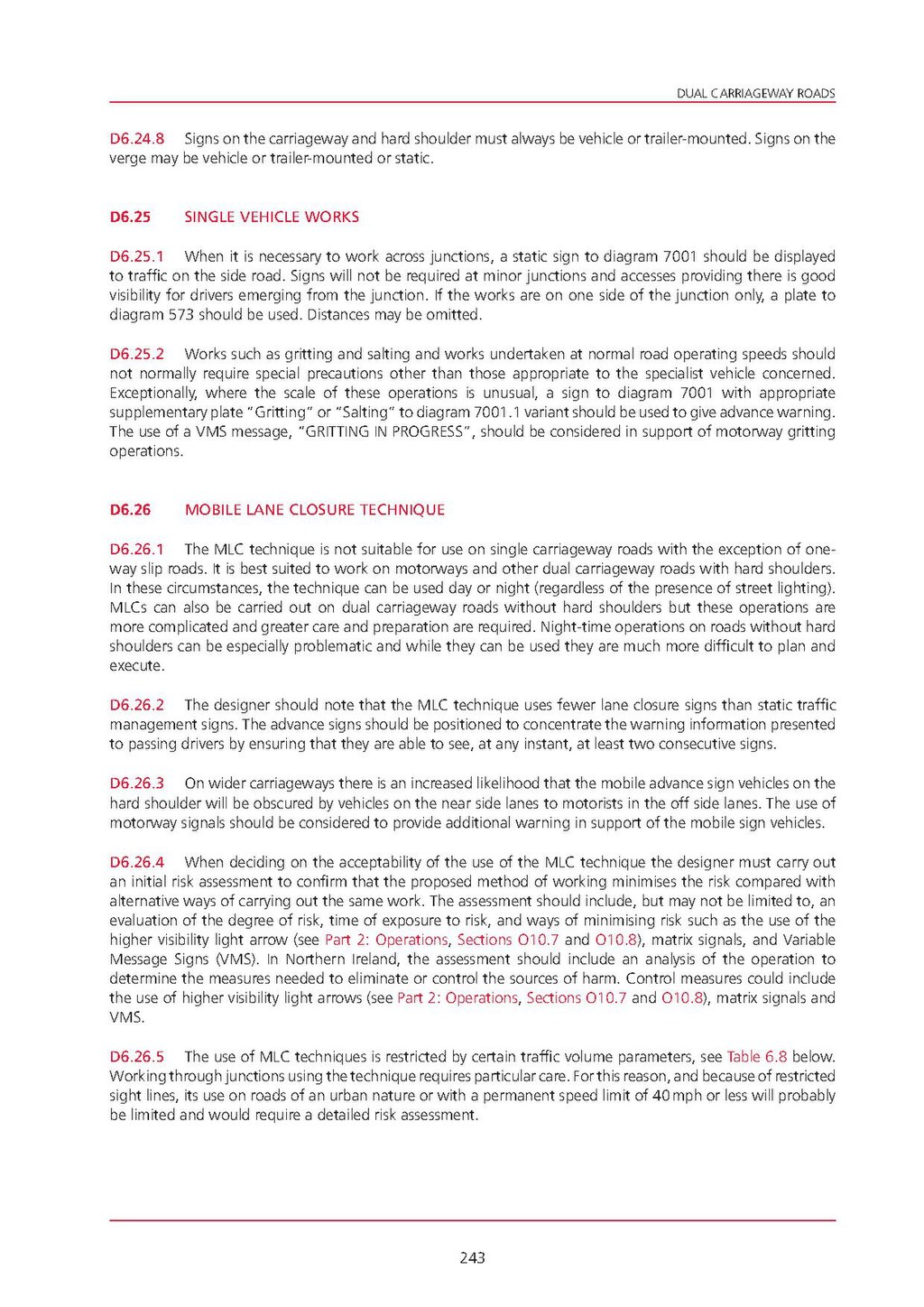D6.24.8 Signs on the carriageway and hard shoulder must always be vehicle or trailer-mounted. Signs on the verge may be vehicle or trailer-mounted or static.
D6.25SINGLE VEHICLE WORKS
D6.25.1 When it is necessary to work across junctions, a static sign to diagram 7001 should be displayed to traffic on the side road. Signs will not be required at minor junctions and accesses providing there is good visibility for drivers emerging from the junction. If the works are on one side of the junction only, a plate to diagram 573 should be used. Distances may be omitted.
D6.25.2 Works such as gritting and salting and works undertaken at normal road operating speeds should not normally require special precautions other than those appropriate to the specialist vehicle concerned. Exceptionally, where the scale of these operations is unusual, a sign to diagram 7001 with appropriate supplementary plate "Gritting" or "Salting" to diagram 7001.1 variant should be used to give advance warning. The use of a VMS message, "GRITTING IN PROGRESS", should be considered in support of motorway gritting operations.
D6.26MOBILE LANE CLOSURE TECHNIQUE
D6.26.1 The MLC technique is not suitable for use on single carriageway roads with the exception of one-way slip roads. It is best suited to work on motorways and other dual carriageway roads with hard shoulders. In these circumstances, the technique can be used day or night (regardless of the presence of street lighting). MLCs can also be carried out on dual carriageway roads without hard shoulders but these operations are more complicated and greater care and preparation are required. Night-time operations on roads without hard shoulders can be especially problematic and while they can be used they are much more difficult to plan and execute.
D6.26.2 The designer should note that the MLC technique uses fewer lane closure signs than static traffic management signs. The advance signs should be positioned to concentrate the warning information presented to passing drivers by ensuring that they are able to see, at any instant, at least two consecutive signs.
D6.26.3 On wider carriageways there is an increased likelihood that the mobile advance sign vehicles on the hard shoulder will be obscured by vehicles on the near side lanes to motorists in the off side lanes. The use of motorway signals should be considered to provide additional warning in support of the mobile sign vehicles.
D6.26.4 When deciding on the acceptability of the use of the MLC technique the designer must carry out an initial risk assessment to confirm that the proposed method of working minimises the risk compared with alternative ways of carrying out the same work. The assessment should include, but may not be limited to, an evaluation of the degree of risk, time of exposure to risk, and ways of minimising risk such as the use of the higher visibility light arrow (see Part 2: Operations, Sections O10.7 and O10.8), matrix signals, and Variable Message Signs (VMS). In Northern Ireland, the assessment should include an analysis of the operation to determine the measures needed to eliminate or control the sources of harm. Control measures could include the use of higher visibility light arrows (see Part 2: Operations, Sections O10.7 and O10.8), matrix signals and VMS.
[D6.26.5 The use of MLC techniques is restricted by certain traffic volume parameters, see Table 6.8 below. Working through junctions using the technique requires particular care. For this reason, and because of restricted sight lines, its use on roads of an urban nature or with a permanent speed limit of 40mph or less will probably be limited and would require a detailed risk assessment.
243
